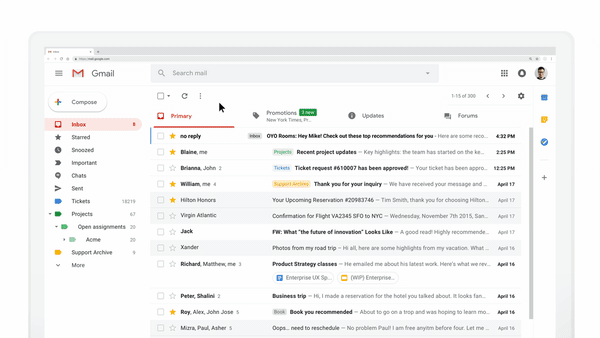AMP is the acronym for “Accelerated Mobile Pages”, an open source technology that Google launched in 2015 to improve the user experience on websites from any device.
In recent months, this technology has begun to be applied to emails, with Gmail, Google’s tool, being the first client to support AMP and the use of dynamic and interactive elements in emails.
This technology allows you to create interactive messages that are updated in real time. Using AMP, users can RSVP to events, fill out questionnaires, interact with image carousels, view real-time product prices, as well as interact with other Google applications.
This means that the emails will no longer be static content sent at a specific time but will offer a much more interactive, dynamic and personalized experience, becoming a kind of small websites.

What are the advantages of using AMP in emails?
First of all, it allows information to be updated in real time, so you will never have outdated stock or prices that do not correspond to your website. Second, you can create more engaging and interactive content, allowing users to interact with forms or image carousels and spend more time on email.
Finally, it allows users to make reservations and purchases directly from there without having to go to a web page, which gives them greater convenience.
What does the AMP offer to the development of Email Marketing?
it is a new language to learn and implies some security requirements to be able to use them. At the moment, email messages have two different MIME types: the HTML version and the text version. AMP requires a third type of MIME-type and email platforms will take a while to have it available. In this sense, at the moment only Gmail interprets messages in AMP format. Although Gmail has been a pioneer, surely the rest of the mail clients such as Hotmail and Yahoo will soon adopt this same dynamic. Second, new metrics must be incorporated to evaluate the performance of our shipments since the user can perform a multitude of actions not controlled until now. Finally, the dynamism of the emails implies a decrease in visits to web pages. Like all new developments, although it still has some drawbacks, its future outlook is very promising and these unknowns will be resolved as its use spreads and more applications add to its interpretation.
Without a doubt, AMP means a resounding change in the way of doing Email Marketing and in the user experience it offers, making it much more personalized and interactive.

